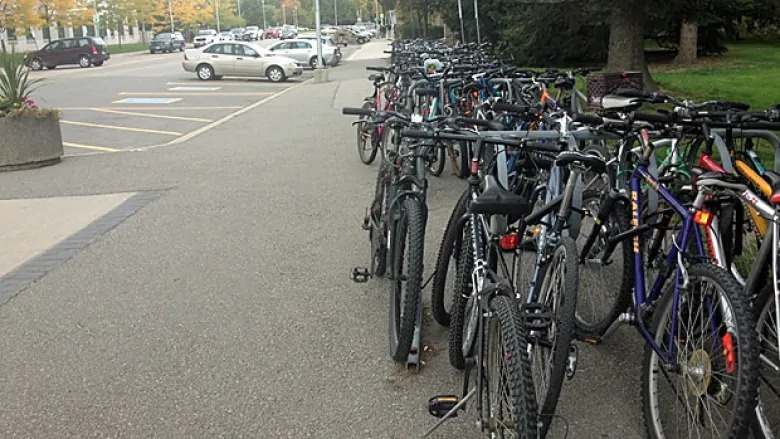Ottawa previously enforced the law through ‘radar devices’

The public works committee will vote on whether it should formally request Hamilton police to enforce the one-metre passing law.
The motion, which will go before the public works committee on Wednesday, requests police to “consider options for the enforcement of the one-metre passing law for cyclist safety.”
John-Paul Danko, a Ward 8 councillor, tabled the motion after Share the Road Cycling Coalition presented to the committee on cyclists and safety in Hamilton.
Danko said that there’s still a lot of confusion when it comes to knowing the rules of sharing the road.
“A lot of drivers don’t actually understand what their obligations are with cyclists on the road,” he said. “[They’re unaware] that a bicycle is equivalent to any other vehicle — that the motorist is obligated to slow down and pass safely regardless of how fast the bike is moving.”
The motion suggests that police could enforce the rule by replicating the tactics of Ottawa, Guelph and other communities, which use radar devices.
Danko explained that the devices, which are mounted on police bikes, can register the distance between them and a passing vehicle. Police can then alert officers further along the road, who will give the drivers an “information ticket.”
“It’s an educational campaign – it’s not meant as punitive,” he said. “It’s just to get drivers to understand that bikes are entitled to their part of the road.”
When enforced in Ottawa, police began with education before proceeding with fines. The province’s Ministry of Transportation cites a total payable fine of $110 for giving a cyclist less than one metre of space.

Colin Cote-Paulette
Jamie Stuckless, executive director of the Share the Road Cycling Coalition, presented ‘next steps’ for making the city safer for cyclists to the public works committee earlier this month.
Ontarians skittish about cycling
Jamie Stuckless, executive director of Share the Road Cycling Coalition, said that she’s pleased to see that the committee is responding so quickly to their recommendations. She said that enforcing the law is a way for more cyclists to feel safer and more comfortable on the roads.
“If you’ve had the experience of being on a bike and being passed closer than a metre, it is really unnerving and dangerous,” she said. She added that contact isn’t needed to endanger a cyclist— just the wind from a passing vehicle could be enough to move someone.
Stuckless pointed out that making it safer to bike in the city would encourage more people to bike as well.
She said that a Share the Road Cycling Coalition 2018 poll revealed that 32 percent of Ontarians say they would like to cycle to and from work. But for those who don’t cycle, 60 percent said their top reason was because they had safety concerns.
“This isn’t about making it so that every person in the city needs to get on a bike,” she said. “It’s about meeting the demand [and recognizing that] your neighbour might want to be cycling.”
Stuckless added that the Ontario traffic law requiring one metre of distance is relatively new — it came into effect in September 2015 — so educational programming would allow drivers to catch up.
Danko echoed this sentiment, and added that enforcement would help in situations where drivers might be unsure about what to do — like driving behind a group of cyclists or being pressured to pass a cyclist by a car behind you.
“It’s not just about the cyclists, it’s about all the drivers on the road,” he said.
Hamilton is listed as one of the organization’s bicycle friendly communities and has been given a ‘silver’ ranking.
Some of Share the Road Cycling Coalition’s next steps for improving safety in the city include looking at infrastructure, identifying network gaps and reducing bike theft.
Our presentation in #HamOnt was very well received – new initiatives to help decrease bike theft and improve cycling safety are coming as a result of the City’s Bicycle Friend Communities application. Want to get feedback for your town? Apply now! https://t.co/EjcT7KclmJ pic.twitter.com/V5Dz1eeAen
— Share the Road (@STRCycling) September 6, 2019
Source: CBC News
